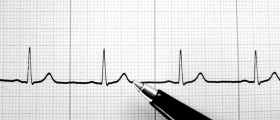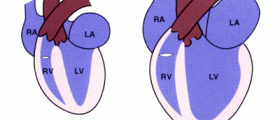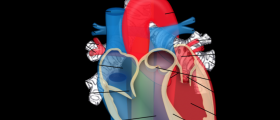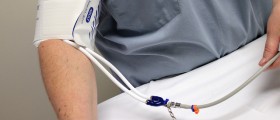Damaged Heart Valve and Systolic Murmur
Various causes lead to the creation of systolic murmur, though it usually happens if the heart’s valves are damaged. Deformation of the valve can be congenital (inherited) or acquired in life due to several reasons.
Acquired conditions can be isolated and combined. For example, the combined condition affects not just one, but several valves, and it is also followed by the obstruction or insufficiency of the right or left heart ventricular chamber.
Most common cause of the damaged valve (mitral and aortal) is rheumatic fever. Another type of valve, tricuspid is usually damaged thanks to the insufficiency of the right part of the heart, or it is a consequence of the decomposition of the left part of the heart. Besides rheumatic fever, common causes of damaged valves are myxomatous degeneration, endocarditis, calcification of valves in older people, and prolapse of valves.

Inflammatory process in rheumatoid fever leads to changes of valves that include thickening of their tissue, calcification, and fibrosis. As a consequence of those changes, depending on the type of valve, different murmurs can be heard.
Conditions Caused by Damaged Valve
Insufficiency of the aorta is caused by a damaged aorta valve, and the systolic murmur is a symptom of this condition. Another cause of aorta insufficiency can be syphilis or Marfan syndrome, which is characterized by damaged connective valve tissue.
Also, certain congenital abnormalities might be the cause, such as bicuspid instead of tricuspid valve. Aortal insufficiency includes regurgitation, and the return of the blood from the aorta into the heart because of the damaged valves. As a result, dyspnea happens, pain in the chest, syncope (loss of consciousness), and three types of murmurs can be heard in this situation. Those are diastolic, mid systolic, and Austin-Flint murmur. The last murmur is heard because of the pressure that blood applies on the frontal mitral valve.
Another condition caused by damaged valves and symptomized with systolic murmur is mitral insufficiency, and it is caused by several factors that lead to malfunction of the mitral valve. Usually, this valve cannot completely close the gap between heart chambers while the heart is pumping, and that ends in disrupted blood flow in the heart, which is a serious heart problem.
All these changes can be spotted with ECG, and murmurs can be heard with a stethoscope. A lot of experience and practice is needed for a doctor to hear and make a difference between several murmurs. Discovering those murmurs is a first step in dealing with the heart problems. If left undiscovered, symptoms become more serious, and damage to the heart is increased and intensified.
- The author examined 376 inpatients and compared their physical findings to transthoracic echocardiography, exploring the associations between echocardiography and systolic murmurs and investigating the diagnostic accuracy of physical examination for pathologic murmurs.
- Four echocardiographic variables predict the presence of systolic murmurs: peak aortic velocity (P <.001 mitral regurgitation severity valve e-point velocity and absence of pericardial effusion when diagnosing murmurs the most helpful finding is its distribution on chest wall with respect to left parasternal space a landmark that distinguishes into patterns.>
- The “apical-base” pattern indicates increased aortic velocity (likelihood ratio [LR] 9.7; 95% confidence interval [CI]; 6.7-14): a delayed carotid upstroke (LR 6.8; 95% CI; 4.0-11.5); absent S2 (LR 12.7; 95% CI; 5.3-30.4); and humming quality to the murmur (LR 8.5; 95% CI; 4.3-16.5) further increase the probability of aortic valve disease.
- The “broad apical” murmur pattern suggests significant mitral regurgitation (LR 6.8; 95% CI; 3.9-11.9); and the “left lower sternal” murmur pattern indicates significant tricuspid regurgitation (LR 8.4; 95% CI; 3.5-20.3): additional bedside observations refine these diagnoses.
- Nonetheless, this study shows that some classic physical findings are no longer accurate, that physical examination cannot reliably distinguish severe aortic stenosis from less severe stenosis, and that classic physical findings, despite having proven value, are absent in many patients with significant cardiac lesions.










-In-Infants-And-Older-Children_f_280x120.jpg)





Your thoughts on this
Loading...